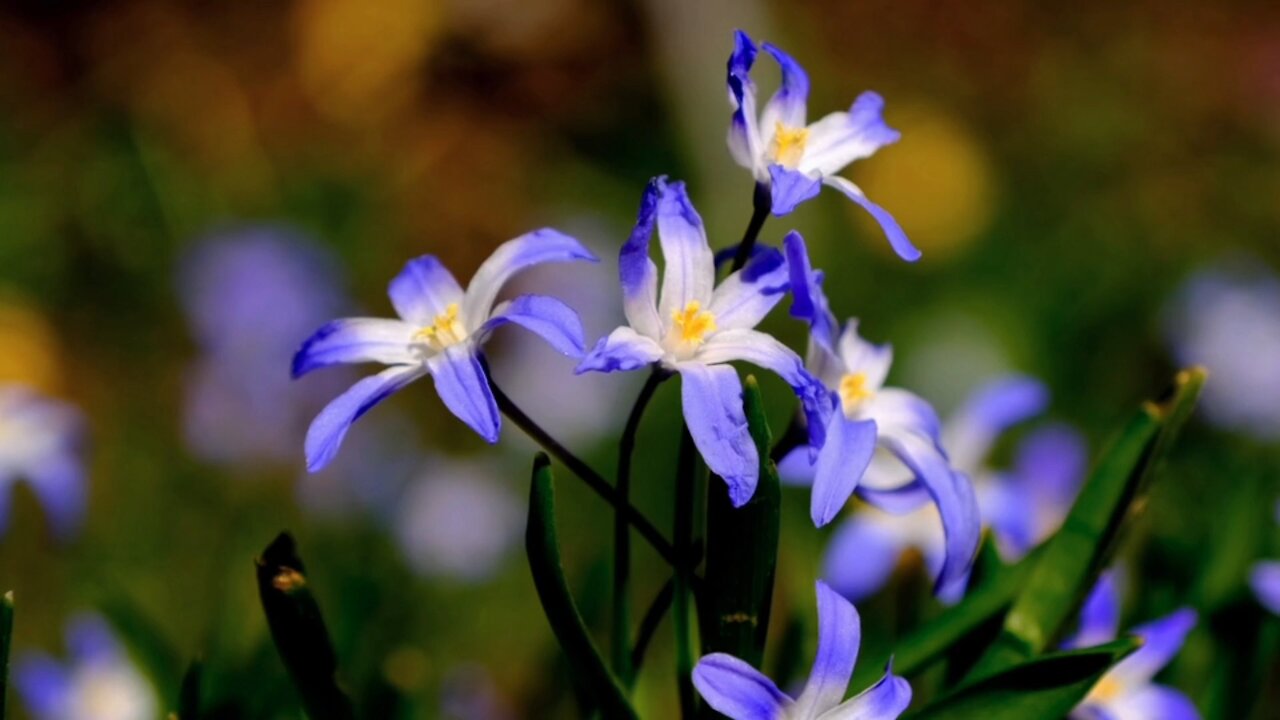Premium Only Content

"From Spring Blooms to Fall Foliage: The Beauty of Blue Star Flowers"
Blue star flowers refer to plants from the genus *Amsonia*, commonly known as bluestars. These perennial plants are admired for their delicate, star-shaped blue flowers, which bloom in late spring to early summer. Here's more about them:
### Botanical Description:
- **Genus:** *Amsonia*
- **Family:** Apocynaceae
- **Common Name:** Bluestar
- **Species:** Several species belong to this genus, including *Amsonia tabernaemontana*, *Amsonia hubrichtii*, and *Amsonia ciliata*.
### Physical Characteristics:
- **Flowers:** The flowers are small, typically pale blue, and star-shaped with five petals. They grow in clusters at the tips of the stems.
- **Leaves:** The leaves vary depending on the species, but they are usually narrow, lance-shaped, and bright green, turning yellow in the fall.
- **Height:** Bluestar plants can range from about 1 to 3 feet in height, depending on the species.
- **Growth Habit:** They have a clumping growth habit, forming dense mounds of foliage.
### Growing Conditions:
- **Sunlight:** Bluestars thrive in full sun to partial shade.
- **Soil:** They prefer well-drained, moderately fertile soil. They can tolerate a range of soil types, from sandy to clay.
- **Watering:** These plants are relatively drought-tolerant once established, although they prefer regular watering during dry periods.
### Blooming Season:
- Bluestar flowers typically bloom from late spring to early summer, usually in May or June. The blooming period lasts several weeks.
### Uses in Gardens:
- **Ornamental Value:** Bluestar plants are popular in gardens and landscapes for their long-lasting blue flowers and attractive foliage, which provides interest even after the blooming season.
- **Fall Color:** In addition to their spring blooms, bluestars are known for their brilliant golden-yellow foliage in the fall, making them a multi-seasonal interest plant.
- **Wildlife:** They attract pollinators like bees and butterflies but are generally deer-resistant.
### Maintenance:
- Bluestar plants are low-maintenance and relatively pest-free. They benefit from occasional pruning to maintain their shape and can be divided every few years to prevent overcrowding.
### Species Highlights:
1. **Amsonia tabernaemontana**: Also known as Eastern bluestar, this species is native to the southeastern United States. It has broader leaves and forms a bushy clump.
2. **Amsonia hubrichtii**: Known as Arkansas bluestar, this species is distinguished by its fine, thread-like leaves and brilliant fall color. It is native to central Arkansas.
3. **Amsonia ciliata**: Commonly called fringed bluestar, this species is more compact, with hairy leaves and stems, and is found in sandy soils of the southeastern U.S.
Bluestar flowers are valued for their delicate beauty and adaptability, making them a great addition to perennial borders, woodland gardens, or naturalized areas.
-
 6:29
6:29
BIG NEM
23 hours agoCultivating God Mode: Ancient Taoist NoFap Practices
36.9K9 -
 30:53
30:53
Uncommon Sense In Current Times
2 days ago $8.86 earned"Pardon or Peril? How Biden’s Clemency Actions Could Backfire"
56.3K4 -
 40:01
40:01
CarlCrusher
21 hours agoSkinwalker Encounters in the Haunted Canyons of Magic Mesa - ep 4
52.4K2 -
 59:44
59:44
PMG
1 day ago $6.77 earned"BETRAYAL - Johnson's New Spending Bill EXPANDS COVID Plandemic Powers"
58.7K22 -
 6:48:50
6:48:50
Akademiks
19 hours agoKendrick Lamar and SZA disses Drake and BIG AK? HOLD UP! Diddy, Durk, JayZ update. Travis Hunter RUN
180K31 -
 11:45:14
11:45:14
Right Side Broadcasting Network
9 days agoLIVE REPLAY: TPUSA's America Fest Conference: Day Three - 12/21/24
363K28 -
 12:19
12:19
Tundra Tactical
19 hours ago $13.27 earnedDaniel Penny Beats Charges in NYC Subway Killing
76.7K14 -
 29:53
29:53
MYLUNCHBREAK CHANNEL PAGE
1 day agoUnder The Necropolis - Pt 1
165K71 -
 2:00:10
2:00:10
Bare Knuckle Fighting Championship
3 days agoCountdown to BKFC on DAZN HOLLYWOOD & FREE LIVE FIGHTS!
63.9K3 -
 2:53:01
2:53:01
Jewels Jones Live ®
1 day agoA MAGA-NIFICENT YEAR | A Political Rendezvous - Ep. 103
157K39